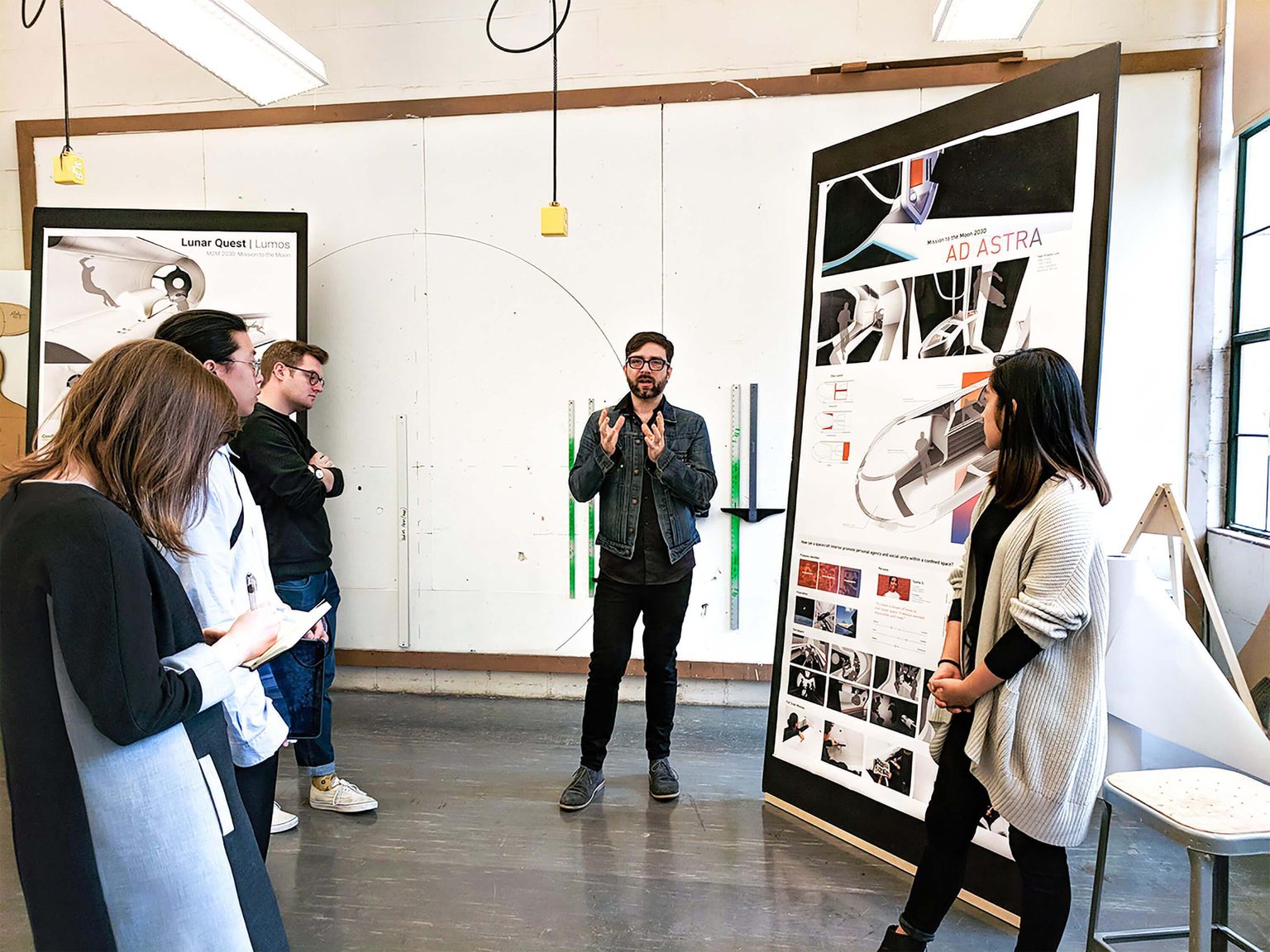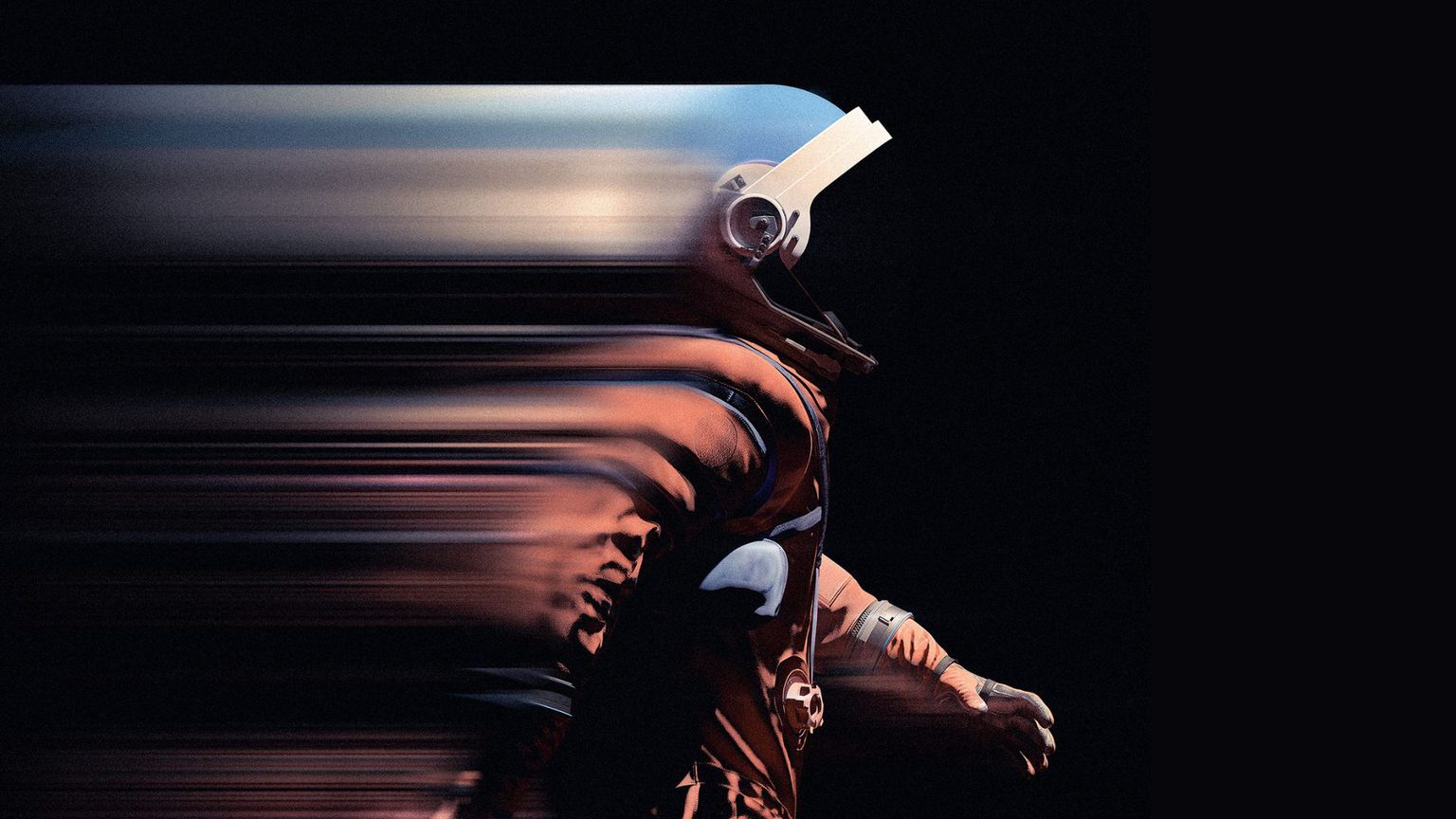
Space

Sarah Matheny | Brand Communications Director

Sarah Matheny
Sarah is a communications strategist who is passionate about sharing stories at the intersection of design, business, and technology.
For decades, Teague has collaborated with aerospace OEMs, private space companies, and NASA to design off-world environments and experiences. In 2022, Creative Director Jacqui Belleau joined a Zero-Gravity flight, taking Teague’s design consulting services and expertise in design for space to another level.
I talked to Jacqui about the importance of human-centered design to accommodate a broader range of commercial space explorers and why design innovations are essential for brands looking to stand out in the new space economy.
How has your Zero-G experience added a new dimension to your design process?
Jacqui Belleau: First-hand experience is always the best education! I’ve been designing and building experiences across the space industry for a while; I thought I knew what to expect during a Zero-G flight, but the reality of moving in microgravity was different than I imagined.
From our work with professional astronauts, we’ve learned it can take up to four weeks for some people to get their "space legs.” Experiencing spatial disorientation and navigation difficulties during my flight was eye-opening; this type of primary research adds an invaluable dimension to the design process and our approach to problem-solving. But of course, helping future space explorers adjust quickly to the uniqueness of the environment is just one example of how design can help improve the human experience in space.
Could ease of adjustment to living in microgravity be a reason future customers choose one brand’s station or on-orbit experience over another?
Absolutely! A well-designed experience on orbit and across a user journey will deliver a significant competitive advantage. We’re still in the early stages of imagining new commercial space environments, but right now is the right time to start thinking about user experience and brand expression. Space companies that value design from day one and invest in the customer experience from beginning to end will see a return. Like Apple or Tesla in their categories today, the brand that delivers the best experience will become synonymous with innovative design and user experience in space. Good design drives business and a brand’s ability to command a price premium. Future customers will seek out the best experience possible, one that considers all their needs and uniquely delivers on the promise of space.
Human-centered design and engineering working together is a superpower at Teague. Why is this alignment so important for commercial space development?
Alignment is critical in commercial space because we’re doing something high-stakes that’s never been done before: enabling broad access to space for a more diverse and lesser-trained audience. We’re also trying to drive consistency across the user experience and brand expression, which has never been considered. Bringing human-centered design and engineering together ensures teams are headed in the same direction with a shared understanding of business, functional, and experiential objectives to determine if a vision is feasible and make informed decisions when evaluating trade-offs.
Including human-centered design in early-stage mission planning has a particular advantage.
Including human-centered design in early-stage mission planning has a particular advantage; we can help product and engineering teams establish a north star and product roadmap, identify opportunities for differentiation, and anticipate potential challenges. Doing this work upfront brings down development costs. Beyond that, an improved user experience will reduce training time – we'll never have broad access to space if it takes years of training per person – and makes life off-world generally more efficient and cost-effective.
At Teague, we have a lot of experience designing for space and working with engineering teams; we know how to balance safety and system requirements with business goals and user needs. Safety and functionality will always be paramount, but human-centered design should be considered an essential third pillar to improve off-world experiences.
How do you approach designing more accessible spacecraft environments for lesser-trained crews?
We want to ensure that what people are experiencing in space is comparable to consumer experiences on Earth—to make it a more seamless transition. For example, a lot of people currently use smartphones or have some level of familiarity, so we’d want to develop similar user-friendly interfaces. Crew time is extremely expensive. Making touchpoints more intuitive will help people be more organized and productive.
We want to ensure that what people are experiencing in space is comparable to consumer experiences on Earth—to make it a more seamless transition.
It also depends on the mission. You might need a particular set of solutions when you’re acclimating, and then you might want more personal control after you’ve adjusted. You don't want to have training wheels on for everyone all the time—that might literally hold people back!
Designing equitable experiences centered on diversity and inclusion can be challenging on Earth. How do you advocate for DEI on orbit?
Designing equitable experiences comes down to being intentional and following through on real commitments to DEI, even when it feels more challenging. For years, women didn’t have access to space, partly because of differences in anatomy but also because they weren’t represented in roles where they were able to influence the experience or hardware design.
To have equitable experiences in space, we need to hire and build diverse teams to design and engineer these environments, and influence space policy, to ensure a range of voices are represented and heard. We should also appeal to future generations, reach out to students from all backgrounds to let them know the range of opportunities available to them in the space industry, and help pave their path to professional practice.
What other topics need to be addressed when designing off-world environments, especially for longer missions?
We’ll have to start addressing a much wider range of human behaviors and needs. Sex. Death. Managing disorderly conduct. Drinking alcohol…we’re not at the point where we’re mapping the user journey of a drunk space tourist just yet, but having protocol prepared wouldn’t be the worst idea.
As the industry expands and we increase access to space, we need to start thinking beyond better user experiences; ethics and responsible design should shape humanity’s off-world future.
Right now, the human experience in space is designed for individuals and crews, not couples or families. We’re still very focused on space being a productive environment centered on scientific discovery. Longer missions will change that. We’ll have to start accounting for human needs that aren’t found in a “work” environment. What about having babies? Should we enable that? Is it fair? How will a human develop in microgravity? As the industry expands and we increase access to space, we need to start thinking beyond better user experiences; ethics and responsible, innovative design should shape humanity’s off-world future.
Designing for a captive audience with different interests and goals feels like the ultimate challenge, and a bit like designing a cruise ship experience …the passengers’ mission is pleasure, but the captain and crew have different objectives.
And these different missions can co-exist right! The captain and crew have specific roles across hospitality, maintenance, or entertainment, and passengers don’t really experience the behind-the-scenes efforts in normal day-to-day operations. In the case of an emergency, there is protocol, training (musters), and chain of command. Long-term or large group missions bring up the question of what authority looks like when you’re not an intimate crew. I think we’ll see similar paradigms to cruise ships or oil rigs as future station complexes grow in size and scale.
A more near-term reality of what jobs in space could look like is McMurdo Station in Antarctica. I’ve had several friends leave their corporate roles in the US to fly down to work in food service or trash removal. They took on seasonal roles just to have the experience of visiting and living in Antarctica for a season. Co-existing with them in this defined area were highly trained specialists and scientists; they shared meals, movie nights, and costume parties, but the roles and training required varied greatly. It’s not hard to imagine people signing up (and paying money) to work a position on a space station just to experience space.
After your Zero-G experience, what’s next?
At some point, having designers be part of the on-orbit experience is going to bring us more information that will help break our Earth-bound biases. Designers could make first-hand observations with trained eyes, while other people are focusing on their own objectives and probably not even aware of the work-arounds they're having to do–because the space isn’t as inclusive and accessible as it could be. Maybe it’s effective, but it's definitely not optimized yet.
On my Zero-G flight, I thought about how I might design restraints and mobility aids differently, just by discovering a spectrum of micro adjustments that I could leverage in new ways. Designers having access to space for extended periods of time will give them longer windows to test, build, and iterate to come up with better solutions.
*This interview has been edited for length and clarity.